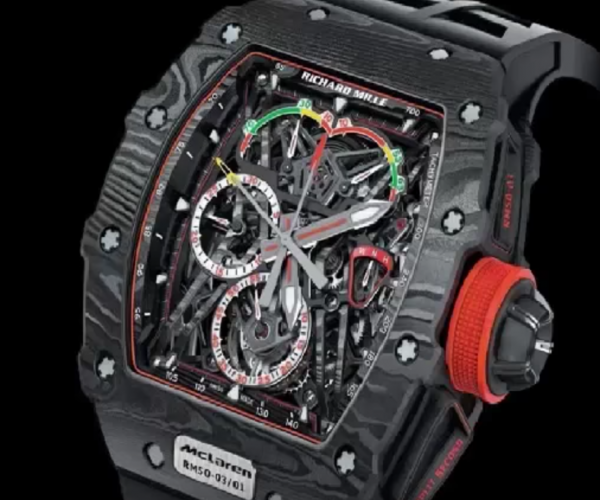By Staff Reporter, | January 20, 2017

The ultralight high-performance mechanical watch was made by pairing leading graphene research with precision engineering. (YouTube)
The University of Manchester, in collaboration with McLaren F1 and watchmaker Richard Mille, recently unveiled the world's lightest mechanical watch weighing only 40 grams. The case of the watch is made of a graphene composite which is lighter than any other watchmaking material.
Like Us on Facebook
The ultralight high-performance mechanical watch, unveiled in Geneva at the Salon International De La Haute Horlogerie, was made by pairing leading graphene research with precision engineering. The RM 50-03 watch, which was made using a unique composite called "Graph TPT" that incorporates graphene, has a strong but lightweight new case.
Graphene, the world's first two-dimensional material at just one-atom thick, was first isolated at The University of Manchester in the year 2004. It has a potential to revolutionize a large number of applications which include high-performance composites for automotive and aerospace industries, and bendable mobile phones, tablets, and next-generation energy storage.
The strap of the new watch is also improved with the addition of graphene material. The rubber of the strap, injected with graphene, has improved mechanical properties and resistance to wear.
Robert Young, Professor of Polymer Science and Technology at The University of Manchester, tweeted some insights into the benefits of using graphene. "We have shown that the incorporation of graphene into the watch case can have major implications for improved performance of the component in service and also enable further weight reduction in future designs," he wrote.
The watch, which was designed and inspired by the wishbone suspension structure of a McLaren-Honda Formula 1 car, withstood tremendous shock damage and survived unscathed during tests.
James Baker, Graphene Business Director at the University of Manchester, said that the collaboration with McLaren F1 and Richard Mille has brought together three leading organizations that strive for excellence and perfection in their fields. He added that the results of this project shows why graphene is perfect for delivering improvements where high-performance materials are necessary.
"It is a key step forward into developing more widespread applications including automotive and aerospace," he noted.
-
Use of Coronavirus Pandemic Drones Raises Privacy Concerns: Drones Spread Fear, Local Officials Say

-
Coronavirus Hampers The Delivery Of Lockheed Martin F-35 Stealth Fighters For 2020

-
Instagram Speeds Up Plans to Add Account Memorialization Feature Due to COVID-19 Deaths

-
NASA: Perseverance Plans to Bring 'Mars Rock' to Earth in 2031

-
600 Dead And 3,000 In The Hospital as Iranians Believed Drinking High-Concentrations of Alcohol Can Cure The Coronavirus

-
600 Dead And 3,000 In The Hospital as Iranians Believed Drinking High-Concentrations of Alcohol Can Cure The Coronavirus

-
COVID-19: Doctors, Nurses Use Virtual Reality to Learn New Skills in Treating Coronavirus Patients







